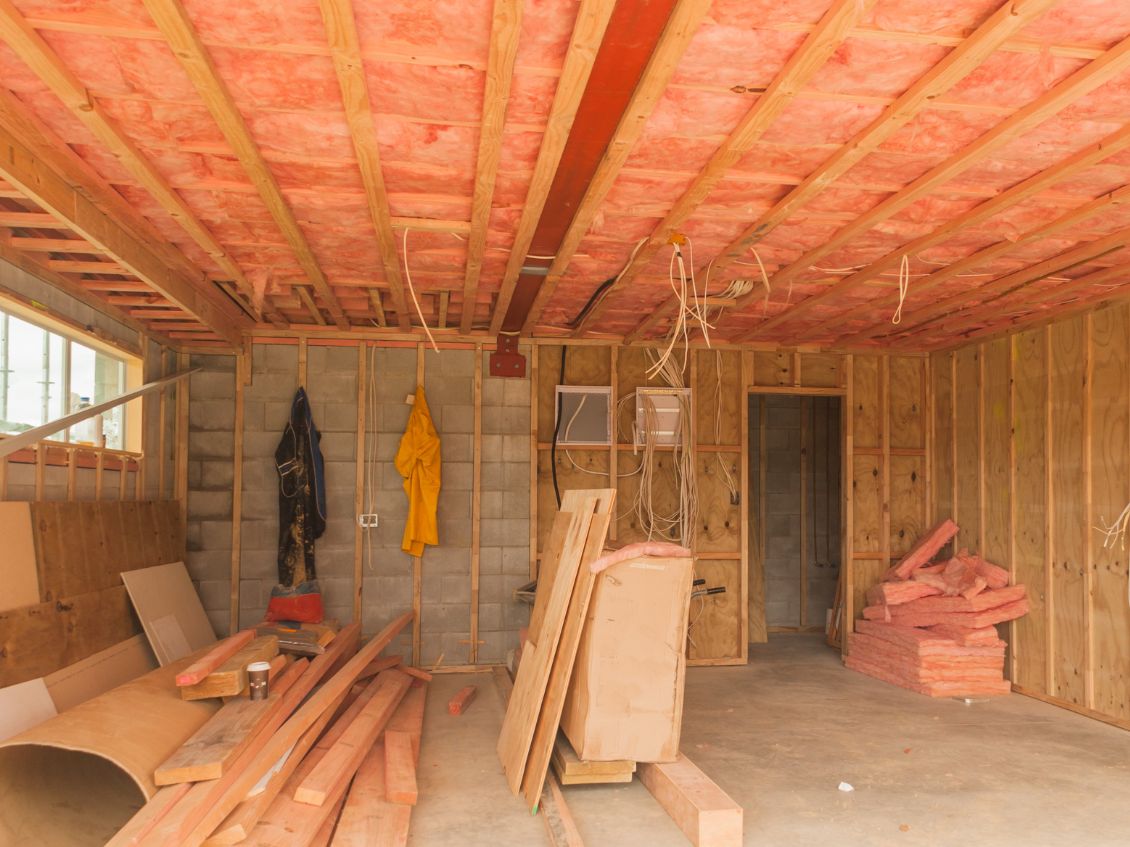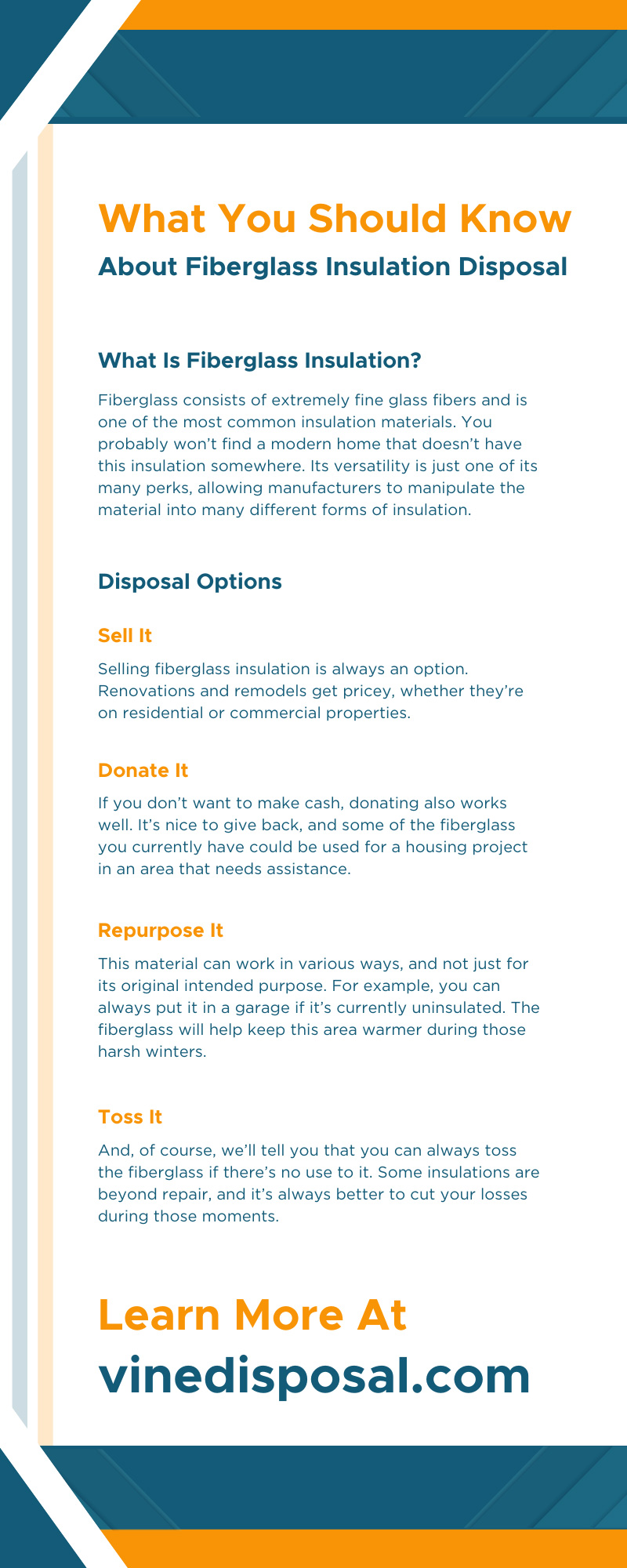
A lot of homeowners don’t necessarily know the ins and outs or the manufacturer of their homes. They may know which experts to call to fix and solve a problem, but they don’t necessarily know the structure or how it was all put together. This sometimes makes it harder to know insulation and other factors.
We’re here to help. If you’re planning a remodel soon, you’re going to need to know about the proper disposal of certain materials. Here’s what you should know about fiberglass insulation disposal.
What Is Fiberglass Insulation?
It’s always a good idea to know what you’re working with before trying to handle it. Therefore, all homeowners should have a basic understanding of some of the materials used to create and construct their homes. You never want to run the risk of handling something harmful.
Fiberglass consists of extremely fine glass fibers and is one of the most common insulation materials. You probably won’t find a modern home that doesn’t have this insulation somewhere. Its versatility is just one of its many perks, allowing manufacturers to manipulate the material into many different forms of insulation.
The insulation can come as a blanket (batts and rolls), loose-fill, rigid boards, and duct insulation. The form really depends on the developer and what they consider the better option for the current project.
Fiberglass Insulation Materials
Because the world is all about making the environment a better place, manufacturers use varying amounts of recycled glass to make the material. Renovating and development projects waste too many natural resources as it is, so it’s always a plus when recycled materials come into play.
Manufacturers produce medium and high-density fiberglass batt insulation products. These products are a little higher than the standard batts. The increase makes them denser, and they’re more commonly used in places like cathedral ceilings because of their limited cavity space.
Manufacturers construct fiberglass insulation from molten glass spun or blown into fibers. About 40 to 60% percent of the glass is recycled material.
Disposal Options
Now that you know the basic outline of what fiberglass is, you need to know how to properly remove it from your property. Because we’re all about giving you options here at Vine Disposal, there are a few we figure the average homeowner would like to consider.
Sell It
Selling fiberglass insulation is always an option. Renovations and remodels get pricey, whether they’re on residential or commercial properties. If the property owner has a chance to make a quick buck during the process, then by all means, have at it.
Selling the fiberglass really only comes with two loose requirements. First, you should make sure you have a large quantity. And second, most of it should be in good condition. Trying to sell fiberglass for only one area or attempting to sell damaged fiberglass won’t do anyone any good.
There are businesses that buy and sell fiberglass for repurposed uses. A simple Google search will let you know who in the area would be interested.
Donate It
If you don’t want to make cash, donating also works well. It’s nice to give back, and some of the fiberglass you currently have could be used for a housing project in an area that needs assistance. There are cities and towns with material exchanges that could take the fiberglass and offer you something in return.
Most of these items they offer will probably be recycled—and that’s okay; completing a renovation or development project with recycled items is always a plus. For one, it’s more affordable—not to mention that the recycled materials work just as well as new ones.
The donation organization could very well recycle the fiberglass you give them. Some recycling facilities accept wool and polyurethane foam insulation.
Repurpose It
We previously mentioned donating and selling the material for others to use, and you can do the same. Property owners can always repurpose their own fiberglass as long as it’s still in good condition. Many companies can blow in cellulose, vacuum it up, and blow it back in.
Once it’s fluffed back up, it’ll reach the desired depth again. Watch out for mold or mildew on the glass or the foam board. If any has formed, you’ll need to dispose of the materials immediately. Keep in mind that you don’t need to stick with the original structure for fiberglass insulation.
This material can work in various ways, and not just for its original intended purpose. For example, you can always put it in a garage if it’s currently uninsulated. The fiberglass will help keep this area warmer during those harsh winters. It’s also a good idea to use it for barns and livestock shelters, as the insulation will help keep animals warm and safe when the temperatures drop.
Toss It
And, of course, we’ll tell you that you can always toss the fiberglass if there’s no use to it. Some insulations are beyond repair, and it’s always better to cut your losses during those moments. Throwing it out will require two things.
First, you’ll need to rent a dumpster. Lucky for you, we have 30-yard dumpster rentals that can handle the job that are the perfect size for average-size and larger-scale projects. Speak with your provider about any specific guidelines on how to handle the disposal, as some might require you to place the fiberglass inside trash bags.
Secondly, you need to coordinate with the dumpster provider about taking the insulation to a landfill. Most of the time, the landfill fee will not be included with the price or the rental because it varies. Make sure you get all the information before moving forward.
Safety First
Safety may be last on the list, but it needs to remain at the forefront of your mind. This material can be highly irritable to the skin, and you want to handle it with care. If you do need to place the insulation inside trash bags, make sure you wear the proper gear.
Approach the insulation with protective gloves and goggles. It’s also a good idea to wear long-sleeve shirts and pants; the less skin showing, the better. And lastly, if you’re disposing of cellulose insulation, you need a dust mask to protect your lungs.
Now you know about fiberglass insulation disposal, we can help with the process. For more information, visit our website.

